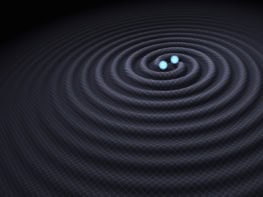What’s the best way to determine the structure of a molecule that cannot be integrated within a periodic lattice?
Blow the heck out of it using x-ray pulses from the Linac Coherent Light Source (LCLS) — at least according to SLACs Philip Bucksbaum.
The LCLS will open next year at SLAC in California and will be much brighter than existing x-ray sources and will be capable of producing very short x-ray pulses.
It takes about 200 fs for the molecule to explode and the trick is to collect the diffraction data in the first 10-20 fs — when the molecule is still intact. By blowing up 100,000s of the same molecules, Bucksbaum claims that a 3d image of the molecule can be reconstructed. This technique has already been proven at an x-ray facility in Germany.
In his talk “Ultrafast X-ray Science at SLAC and LCLS” (U19 1), Bucksbaum described several other ways of harnessing the violent reaction between the X-ray pulses and sample.
For example, the pulses could be slammed into a solid such as iron. This would heat the sample and drive structural phase transitions that would propagate through the iron as “shock waves”. Real-time images of this process could be generated from the diffracted x-rays. This could give physicists valuable information about how lattice defects and other material properties affect the dynamics of phase transitions.



